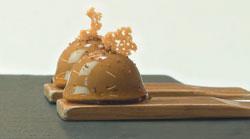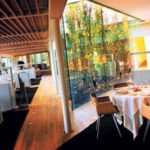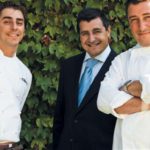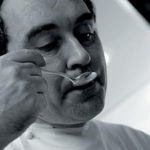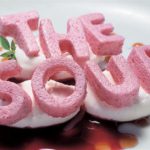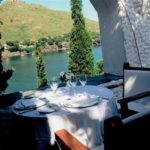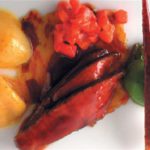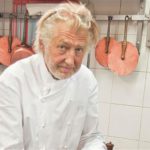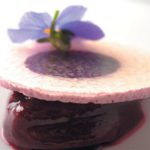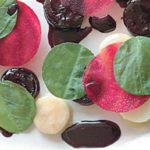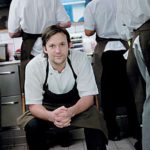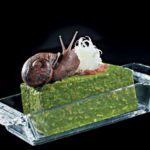Melanie Hansche travelled from Sydney to try five famous restaurants in Spain, France, Denmark and the United Kingdom. What followed was an adventure in gastronomy
This is a tale of gluttony. A tale of two lovers masticating their way across the Continent, eating the finest food available to humanity (according to the chefs, critics and food professionals who compile the annual San Pellegrino World’s 50 Best Restaurants list). It begins when we win the lottery. Culinary lottery. The holy grail of gluttons everywhere – a booking at Spain’s El Bulli, purportedly the world’s best restaurant and the most difficult at which to secure a reservation. There are two million reservation requests for 8 000 places every year.
The highly sought-after prize gets us thinking. If we’re flying all the way to Spain to eat at a restaurant, where else can we eat? What other top restaurants should we sample? How many courses can we eat in two weeks? (Answer: 200 courses in 12 days, give or take.) We become carried away with what else we might be able to consume in a short amount of time in the experience of a lifetime – bank account, waistline and ethical implications of such consumption be damned. Suddenly we’ve locked in reservations for the top four restaurants in the world: Noma in Copenhagen (which eventually knocked El Bulli off the top perch), El Bulli, England’s The Fat Duck, El Celler de Can Roca, also in Spain, as well as Pierre Gagnaire in Paris. By now the trip has been dubbed the 2010 European Mastication Tour. We print the tour T-shirts. Here’s how the degustation dates played out.
El Celler de can Roca
SAN PELLEGRINO WORLD RATING No 4
COURSES EATEN 15
Situated less than two hours from Barcelona in Girona, this restaurant is run by three brothers: Joan Roca, the head chef, Josep, the head sommelier and the head patissier, Jordi. El Celler inhabits the most contemporary space of any restaurant we visited. It twinkles like a triangular Tardis of light, glass and greenery. It has a wonderful sense of calm. The food is technical and highly conceptual with a strong sense of playfulness, but overall it’s just darned tasty. The brothers are known for their creative approach, developing dishes in the study and laboratory that border the kitchen. To start, a bonsai olive tree is delivered to the table, laden with caramelised olives hooked on its delicate branches. Pop one in your mouth and you realise it’s stuffed with anchovy – a cavalcade of sweet, salty and fishy flavour. It’s the first taste in an array of exciting snacks. Our tasting menu is full of hits, the food remarkably on point with service to match.
The dish of the night, and indeed the dish of the trip, belongs here. Simply described as “figs with foiegras”, a shallow bowl containing a thin layer of melted foie gras is topped with a fresh fig half sandwiched with a layer of fresh foie gras. Dip your spoon into the bowl and you discover a thin layer of fig-like jelly below the foie “soup”. It’s elegant, refined and yet comforting. Desserts are no less spectacular. We’re mesmerised by the “apple”, a frozen red sphere with an icy exterior and a soft, airy apple mousse interior. It’s cool and refreshing with an intense flavour. The wine list is jaw-dropping. The seven-kilo behemoth is wheeled on a trolley and contains two volumes of 50-odd pages each, covering the 30 000-bottle cellar. The cellar is physically divided into five key areas: sherry, Catalan, Riesling, Burgundy and Champagne. If you’re a vinophile, ask nicely for a tour – nothing will prepare you for the ride.
El Bulli
SAN PELLEGRINO WORLD RATING No 2
COURSES EATEN 40
Half the fun of El Bulli is getting there. It’s 20 minutes from the sleepy seaside town of Roses on Spain’s Costa Brava. The rickety taxi ride and winding turns along the isolated coast in the fading light only heighten our anticipation. The restaurant itself is farmhouse rustic with whitewashed walls and dark timber beams, making for a warm and welcoming space. Guests are quickly ushered into the kitchen for the obligatory photo with the chef before being seated at their table. Chef and owner Ferran Adrià has been lauded as the godfather of molecular gastronomy (much as he hates the term) and is famous for presenting the familiar in unfamiliar ways.
The meal is a rollercoaster ride starting with a fastpaced sensory assault. The first 10 courses or “snacks” arrive in machinegun-fire rapid succession and are eaten with your fingers, the waiters instructing you whether the dish requires one bite or two. There’s a frozen mojito and apple “cocktail” to be consumed in one bite, a tasty nori seaweed and lemon snack in two bites – a salty, sour and sweet cracker we deem the ultimate beer accompaniment. A Parmesan “porra” is the best cheese biscuit you’ve ever tasted. Once the “mains” kick in, a more relaxed pace ensues. There are plays and riffs on strong flavours such as soy, hazelnut and garlic as well as on texture and temperature.
Often there’s a joke played on your taste buds. Caviar cream and hazelnut caviar are actually beads of caviar in a hazelnut sauce and beads of hazelnut in a caviar sauce. Adrià’s a genius. Like any rollercoaster ride, there are some lows. An oyster and bone marrow dish takes some confronting, as does cold sea anemone with barnacles and a wacky savoury Japanese-style “tiramisu”. Ironically, the tastiest dishes are the simplest. Truffle “drap” is more or less a white truffle and melted cheese sandwich. It’s heavenly. A tomato tartar is intense, as if Adrià has bottled the very essence of tomato. The final course, the petits fours, arrive in a jewellery box that folds out with the wildest array of morsels and chocolates ever seen at the end of a meal. In the end it’s our English dining companion whobest sums up the experience, which although exciting, fun and thought-provoking, “lacked deliciousness”.
Pierre Gagnaire
SAN PELLEGRINO WORLD RATING No 13
COURSES EATEN 24
Somewhere in our last few hours in Spain, I procure a nasty bout of gastro, presenting itself on the plane en route to Paris. It marked my initiation into the kind of mile-high club I never wanted to join. When you’re on a food trip of Europe, losing your appetite is akin to losing your superpower. And I was due to eat at the most expensive restaurant in France, Pierre Gagnaire, the next day. Situated in the Hotel Balzac off the ChampsÉlysées, Pierre Gagnaire had the most oldworld elegance and charm of any restaurant on the tour. It was also the most old-school in its approach – a hierarchy of waiters in buttoned jackets, dishes presented on silver trays under cloches and two separate menus: one for the gentlemen, with prices, and one for the ladies, without. Given the delicate nature of my condition, I asked the waiter whether he could suggest a light dish.
“Does madam like oysters?” he asked, without any trace of sarcasm. My stomach performed somersaults. These matters aside, the food is a delight. There’s a certain richness and generosity, but also a refined elegance and clarity of flavour. It’s classic French without the lashings of butter. There’s nothing overly tricked-up about the food – Gagnaire displays solidcooking skills.
A dish of lobster for two (your specimen is presented to you live under a lobstershaped cloche before it is dispatched) is cooked four ways. In fact, although set out like a conventional menu under starters, entreés and dessert, each course is cooked four or five ways with all the elements arriving in separate dishes on the table. It makes for an impressive feast. Alas, I push 350 Euros worth of food around my plate like a malnourished supermodel. Only one of us ate for Australia.
Noma
SAN PELLEGRINO WORLD RATING No 1
COURSES EATEN 24
We arrive in Denmark to eat at the world’s newly crowned best restaurant. My superpower has returned and I’m hungry to try chef René Redzepi’s take on natural Scandinavian cuisine, using only seasonal Nordic produce and often foraged for by kitchen staff in the sea and forests around the city. Noma is housed in a rustic wooden warehouse on the docks of Copenhagen’s harbour. On a rainy night in a candle-lit space littered with classic Danish furniture and deerskin hides, we begin our meal with the table centrepiece. With a wry grin, the waiter pushes a small vase of flowers toward us, announcing the first course. The flowers are nasturtiums, dotted with a couple of snails (deceased, of course). We wrap our fingers around the petals, grab the snail and eat. It’s tasty.
Our other starters are a roll call of deliciousness: pickled and smoked quail egg, rye bread sandwiched with crisp chicken skin, dill and smoked cheese, a live fjord shrimp (not for cowards) and the most playful dish – fresh radishes and carrots buried in edible “soil” made from malt, hazelnuts and beer. The main courses are punctuated by a lightness not yet seen on the tour. A pretty dish of orange sea urchin, luminescent balls of roasted cucumber and an icy dill and frozen milk granita is cold yet rich and fresh all at once. A Noma signature dish, the “hen and the egg”, is cooked by the diner at the table. A small pan, burner and timer arrives. Allow your hay oil to heat, crack the egg into the pan, set your timer and finish off the dish with the supplied herbs and greens. It’s a lovely return to simplicity.
One thing that sets Noma apart from the other restaurants on our tour is its approach to service. The chefs serve you the dishes and explain how they’re cooked. This gives every diner an immediate connection with the creator of their food and vice versa – for once the cooks aren’t relegated to the back of a restaurant. This gives the chefs a sense of pride and ownership in their work. We end the meal with a cracker of a dish: beef marrow bones, but not as you know them. The marrow in the bone has been replaced by chewy smoked toffee made from marrow rather than butter. It’s salty, sweet, smoked, beefy fattiness. Wow.
The Fat Duck
SAN PELLEGRINO WORLD RATING No 3
COURSES EATEN 15
Located in an old pub with low ceilings in the village of Bray, an hour outside London, the simple, smart room isn’t what you expect from a showman like Heston Blumenthal. But no matter, everything interesting here is at the table. Blumenthal is an exciting chef who through his inquisitiveness, technical knowledge and cooking skill pushes the concept of food and dining with a real sense of joy and humour.
His signature dishes are everything you expect and more. One of the most homely and comforting is the lurid green snail porridge, flecked with oats, ham, shaved fennel and snails. The porridge is served more traditionally in a bowl these days; it’s warm, like a hug, and far more tasty than you would ever imagine. The roast foie gras with gooseberry, braised kombu (kelp) and crab biscuit is absolute dynamite. The foie’s silky creaminess is cut by a tart smear of gooseberry purée and pieces of salty kombu. I love the playfulness of the mock turtle soup, Blumenthal’s homage to Alice in Wonderland’s mad hatter tea party. A gold fob watch arrives at the table, is placed in a teacup and has hot water poured over it, dissolving into a beef consommé flecked with gold leaf. This is poured over a pressed cube of ox tongue and lardo (cured pork fat) and accompanied by what looks like an egg but is made from root vegetables. The attention to detail is mind-boggling.
The famous BFG (Black Forest Gâteaux) has the ability to bring silence to the table. It’s Bloody Fantastic Goodness. And it finishes us off. After five hours of fun, we leave for the last train to London, clutching lolly bags and smiling giddily like kids in a sweet shop (that’s the name of the final course). What an apt way to end our tour of gluttony. It’s water, gruel and cardio from here on in…
Melanie Hansche is managing editor of donn hay magazine in Australia, an enthusiastic cook and lover of pig bits. Her tour partner is a wine merchant with a strong penchant for Riesling.

